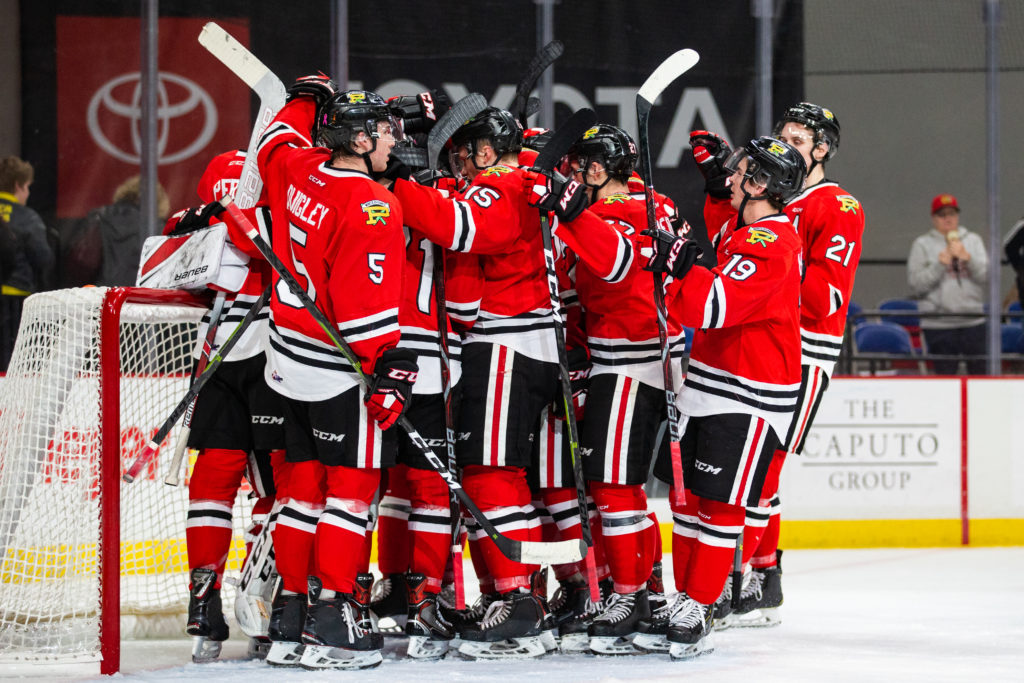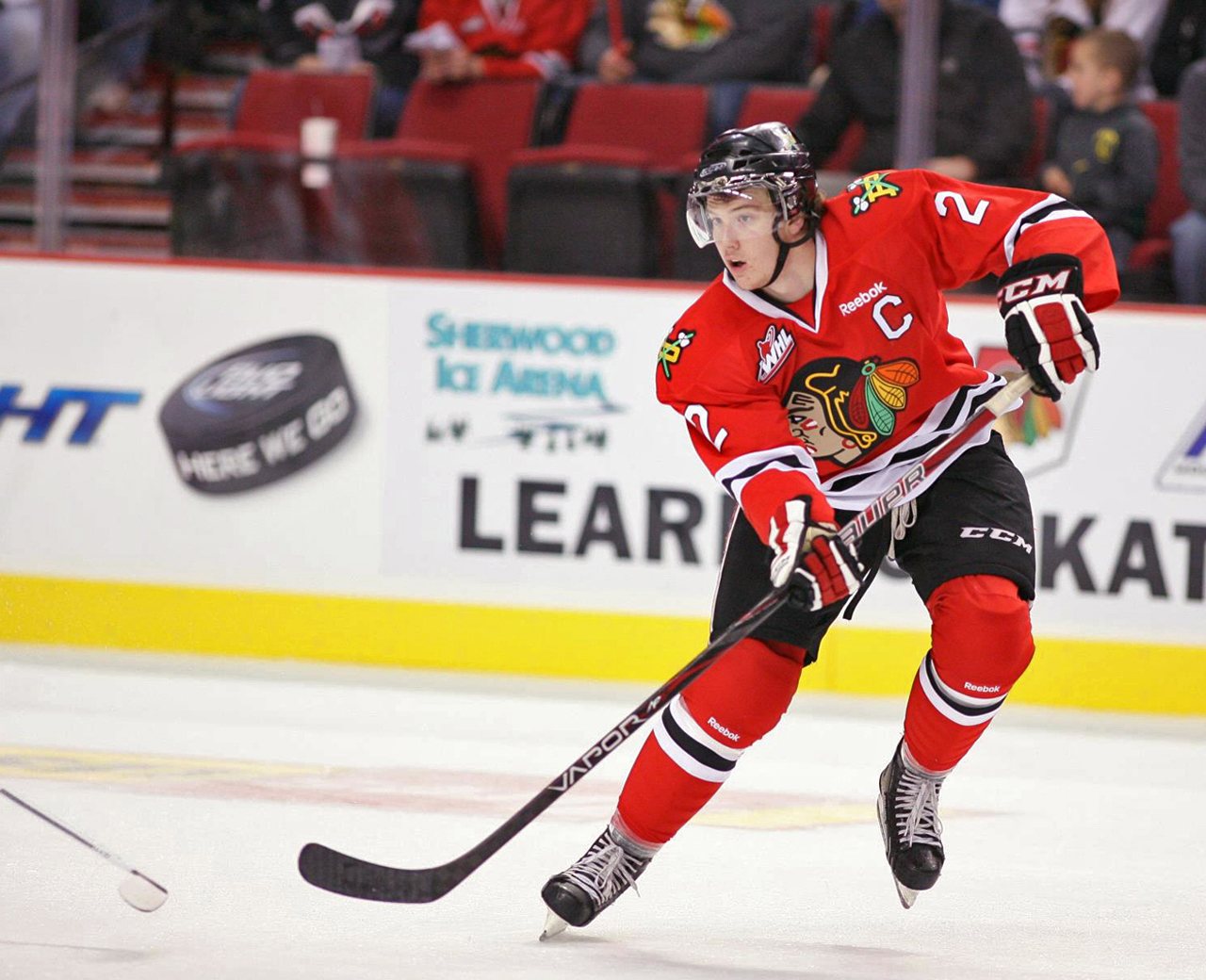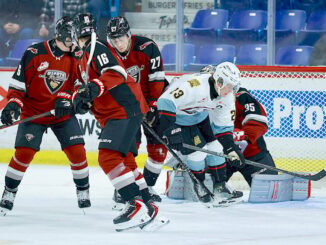
The Ontario Hockey League today announced that it is planning to return to play on December 1, 2020, subject to ensuring that the players, fans, staff and community are able to play and attend games safely. Over the next four months the League will continue to work with government and health agencies to finalize outstanding issues such as safe attendance at venues and cross border travel for teams and players.
“We are looking forward to getting back to playing hockey, but are committed to ensuring that we do so in a manner that is safe and healthy for our players, officials, families, billets, teams, staff, fans and the community,” said OHL Commissioner David Branch. “Players will remain at home until the season resumes and teams will work closely with them on both their academic studies and overseeing their on and off-ice development. In addition, the League will liaise with our facilities to ensure that our venues are safe for our return to play.”
The season will include a 64-game schedule and a 16-team playoff format. The regular season is scheduled to end on Thursday April 29, 2021. The 102nd Memorial Cup presented by Kia is scheduled to be played June 17-27, 2021 and will be hosted by either the Oshawa Generals or Soo Greyhounds.
The WHL posted a day later the following:
Calgary, Alta. – The Western Hockey League announced today that it is now scheduled to open its 2020-21 Regular Season on Friday, December 4, 2020.
As part of the WHL’s commitment to the health and safety of its players, officials, staff, and fans, the opening date of the Regular Season remains contingent on receiving the necessary approvals from the government and health authorities in each of the six provincial / state jurisdictions in WHL territory.
The WHL remains committed to playing a full Regular Season schedule of 68 games, followed by four rounds of Playoffs during the 2020-21 season.
The WHL continues to have regular discussions with government and health authorities on the extensive safety measures the WHL is prepared to take to protect players, staff, and fans, and to address key issues such as spectator capacities and border crossings. By adjusting the start date for its Regular Season to early December, the WHL will have additional time to work with government and health authorities to resolve these important issues.
“Regardless of our start date, the WHL is committed to playing a full Regular Season and Playoffs in 2020-21,” stated WHL Commissioner Ron Robison. “In our discussions with the government and health authorities, it has become apparent that additional time is required to ensure we can return to play in a safe and responsible manner. Our WHL health and safety protocols have been well received by the health authorities but we have several key issues that we will need to reach a resolution on in the coming months.”
The QMJHL has yet to change the scheduled October start date, but if they are to align with the rest of the CHLand not have a huge two month gap, the change will be made soon.
It is also interesting to note that while the WHL is listing a 68-game schedule to correspond with the QMJHL and OHL, the OHL is further reducing their games to 64. The WHL had run 72 games but changed that practice last season to remove some midweek games and it also meant the schedule would be the same across the board. With the OHL change, that is no longer the case.
Both the WHL and OHL have another issue in that both their leagues have US teams. The OHL with two, Erie (PA) Otters and Flint (MI) Firebirds and WHL with an entire US Division of Portland Winterhawks, Tri City Americans, Spokane Chiefs, Everett Silvertips and Seattle Thunderbirds. They could conceivably play in their own Division, but the two in the OHL may have issues if border restrictions continue. The current allowance on the schedule pushes back two months from the original start date plan and leaves little doubt that all teams need ticket revenue to survive. Even though there appear to be many sponsors on websites, printed materials etc, the amount they can charge is very small without TV and thoughts by media that this is small potatoes. The cost of doing business is very high when it comes to minor teams having to run in bigger arenas. Both Calgary and Edmonton also own the junior franchise as well as the NHL, which helps in cost cutting, but places like Portland with two large venues are stuck paying very high rents for the dollars charged. Vancouver, which had been running at the PNE Coliseum which was the old home for the Vancouver Canucks, moved to Langley Events Center. They didn’t use the top level of the Coliseum, which held nearly 16 thousand, opting instead to use the bottom two levels at 7500, Rarely did they meet that threshold even as league champions and the move to the 5200 seat Langley Event Center, which has averaged about 3500 also works with a lower tax base and not paying the costs associated with the Pacific National Exhibition grounds.
As one can see also, they are still waiting on full safety protocols to come into effect. In Oregon, the live audience was reduced back to 100 from 250 and that makes running any team locally in Oregon to be a non starter. What will four months change? There is talk of a potential vaccine by the end of the year which may help to start the flow again.
One of the WHL woes also is in BC. With the announcement of Prince George announcing that they would close the venues where the Cougars play until the end of 2020. If that holds true, the city and the WHL would have to find an arrangement to have them in the fold.
There are alot of intangibles to work on before the players even hit the ice and we will see over the course of the now-four months whether there are enough pieces worked on to start the season in December.




